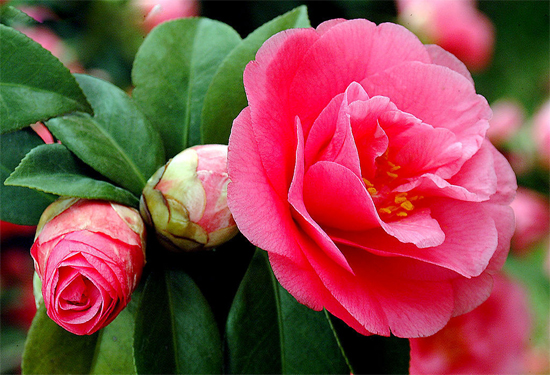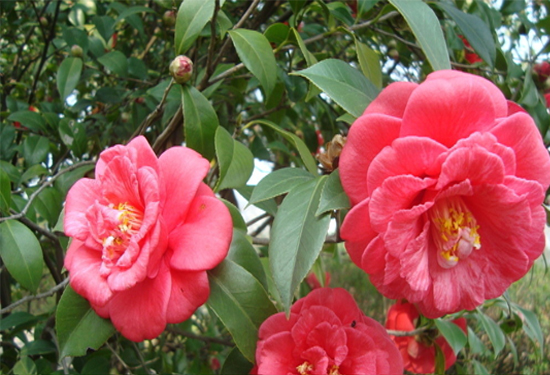Summary of Culture methods and Propagation techniques of Camellia
Introduction: Camellia is a favorite flower species of many female friends, camellia, also known as camellia, resistant to winter flowers, is a rhododendron camelliaceae plant. Camellia is cherished by the horticultural circles all over the world because of its beautiful plants, bright green leaves and colorful flowers, and its flower language is lovely, humble and cautious. Let's learn about the breeding methods and breeding techniques of camellias.

The suitable temperature for the growth of camellias is between 15 and 32 ℃, which requires a certain temperature difference, the environmental humidity is more than 60%, and most varieties can withstand the low temperature of-8 ℃. The cultivation soil of camellia should be acidic and require good air permeability. The root hair is developed and can usually be cultivated with peat, sawn wood, laterite, sawn soil, or above mixed substrate.

Camellias are usually watered with neutral or acidic surface water. Watering should be dry and wet, dry and wet, and water thoroughly, but be careful not to be too dry. Generally speaking, water should be properly deducted before budding at the end of spring, in order to facilitate the transformation to reproductive growth, and the water should not be cut off before flowering.

Camellias like fertilizer, we should pay attention to put base fertilizer in the basin soil, mainly phosphorus and potassium fertilizer, including mature bone powder, hair, chicken feathers, rice chaff ash, poultry dung and superphosphate and other substances. Usually, it is not suitable to apply too much fertilizer, generally apply 2 or 3 times of thin fertilizer from April to May after flowering, and apply a slightly thicker water and fertilizer in autumn and November.

The growth of camellias is slow and should not be over-pruned, which will generally affect the tree-shaped overgrown branches as well as disease and insect branches and weak branches. If there are too many buds on each branch, only 1 or 2 buds can be left, and keep a certain distance, and the rest should be picked as soon as possible so as not to consume nutrients.
Recommended reading: the flower language and legend of poppy jasmine cultivation in 2012
Related
- Wuhan Hospital Iron Tree Blooming Result Was Instantly Frightened by the Gardener Master
- Which variety of camellia is the most fragrant and best? Which one do you like best?
- What is the small blue coat, the breeding methods and matters needing attention of the succulent plant
- Dormancy time and maintenance management of succulent plants during dormancy
- Minas succulent how to raise, Minas succulent plant pictures
- What are the varieties of winter succulent plants
- How to raise succulent plants in twelve rolls? let's take a look at some experience of breeding twelve rolls.
- Attention should be paid to water control for succulent plants during dormant period (winter and summer)
- Watering experience of twelve rolls of succulent plants
- Techniques for fertilizing succulent plants. An article will let you know how to fertilize succulent plants.



